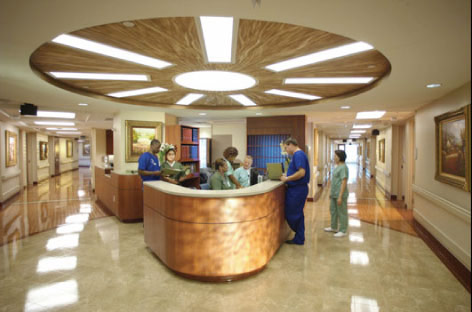WSJ article misses the mark; it’s not just about the chair!
SIT SIT SIT . Sometimes I feel that’s all that I do! Data shows that we spend more time sitting than we do sleeping on our mattress. 32% of us sit for more than 10 hours per day sitting and unfortunately we humans are not built to sit for long periods of time. Somehow though, we have managed to design a world that requires us to sit for very long periods of time and now we have to deal with the fall-out…back discomfort, neck discomfort, hip discomfort and I could go on. Yes, seating design has improved greatly based on research and studies conducted all over the world. Not only do we need to educate people on the proper way to sit in these much improved chairs, but we must remember, although the chair is likely the most important component, it is only one part of the total workstation. Is must be viewed within the system it is used in.
A recent article in the Wall Street Journal “Does Your Chair Have Your Back” covers everything from how to adjust your chair properly, to statistics on the number of people who complain of discomfort associated with their workstation. Although they have a lot of good points, the article doesn’t deliver the complete story. Let’s clear up a few of their points;
First, they state that in a perfectly fitting chair your feet should be planted flat on the floor (agreed) and your knees at a 90-degree angle but they never address the angle of the hip/back which is the most critical angle to consider when sitting in a neutral posture. In addition, the knee should actually be lower than the hip. If the knee is lower than the hip then the angle at the knee is automatically greater than 90 degrees. So let’s get this straight, no pun intended. Sitting straight at 90 degree angles is not recommended.
A neutral seated position that places the least amount of stress on the body is as follows;
- Feet flat on the floor.
- Knees positioned lower than the hip @ a 100 – 110 degree angle to the lower leg.
- Hip positioned at a 110° – 130° angle to the back creating a slightly reclined position.
- Elbows are at a 90 – 110 angle.
- Wrists are flat if using a keyboard.
The missing information in the Wall Street Journal Article that concerns me the most is the angle of the hip. There are tons of studies out there that dates back to 1974 that have proven that sitting at a 90 degree angle is bad for us. Below are a few of MANY studies that concluded that sitting at a 90 degree angle is NOT recommended.
Scottish and Canadian researchers used a new form of magnetic resonance imaging (MRI) to show it places an unnecessary strain on your back. They told the Radiological Society of North America that the best position in which to sit at your desk is leaning back, at about 135 degrees. A study conducted by Anderson and Ortengren in 1974 concluded that lumbar, thoracic, and cervical muscle activity all decrease with increasing backrest inclination up to 110°. Again in 1999 Van Deursen et. al’s. study to determine preferred seat angle showed that both lumbar disc pressure, back muscle activity, and comfort ratings are lowest with a supported recline angle in the range of 110° – 130°. Then again in 2000, Park et. al’s. study showed that both lumbar disc pressure and muscle activity are lowest with a supported recline angle 110° – 130°.
There was another very important piece of information omitted. It doesn’t matter what chair you sit in, if you do not have ALL of the necessary tools that you need, you will never be able to sit in that chair properly. PERIOD. The workstation layout and tools are the drivers behind your resulting posture. It is impossible to sit in the positions described above if your keyboard is on your desktop or if you are writing or viewing documents that are located on flat on your desk. I have personally completed over 5000 one-on-one office ergonomic evaluations in my career, and I RARELY run across a workstation that is optimally designed, and that allows the individual to sit properly. So again, we can design the perfect chair until we are blue in the face, but it won’t matter unless the entire work station is viewed as a system and redesigned to allow for proper use of the chair. You must determine what additional accessories are needed, and remember that even the best of the best ergonomic tools need to be used properly to provide their full range of benefits.
Lastly, I can’t finish this article without saying that I am shocked that WSJ did not mention Humanscale’s seating in their article. I have been fitting people to chairs for the past 25 years and Humanscale’s Freedom, Liberty and World Chairs are in my professional opinion leaps and bounds ahead of the ones that they did mention. We have clients switching from the Leap, Aeron and Think chairs to one of Humanscale’s options all of the time. But that’s a whole other Blog post! Another Day!
if you have any questions or comments specific to this blog post…we’d love to hear from you.


